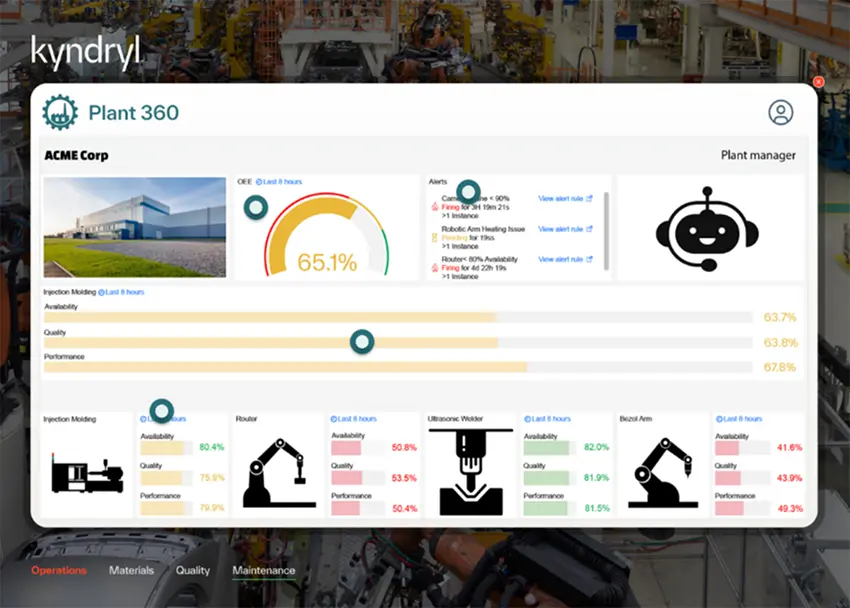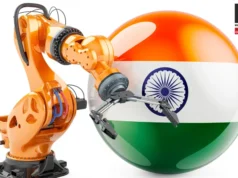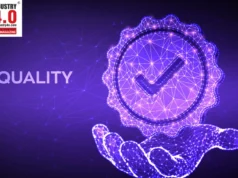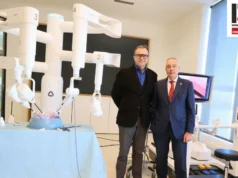From Machine-Centric to Experience-Driven Industrial Interfaces
How Generative and Agentic AI Are Transforming Manufacturing UX
Executive Summary
The manufacturing floor has undergone a remarkable transformation over the past
several decades. What once resembled a collection of isolated mechanical beasts, each
with its own analog gauges and status lights, is evolving into an interconnected
ecosystem of intelligent systems . Today, we stand at the precipice of perhaps the most
significant shift in industrial user experience (UX) design: the emergence of generative
and agentic AI as the primary interface between human operators and complex
manufacturing systems.
 This evolution represents more than just a technological upgrade; it fundamentally
This evolution represents more than just a technological upgrade; it fundamentally
redefines how industrial workers interact with, understand, and control their production
environments. The traditional machine-centric view, where operators monitored
individual assets through dedicated human-machine interfaces (HMIs) and analog
displays, is giving way to something far more sophisticated and intuitive.
From Siloed Machine-Centric Views to Persona-Based Interfaces
Traditional manufacturing interfaces were focused on individual machine status panels
and analog gauges, creating information silos. Operators needed to piece together a
plant-wide understanding from disparate sources, a cognitively demanding and
fragmented process .
The first major paradigm shift in manufacturing UX came with the move from machine-centric to persona-based interfaces. This transition introduced web technologies, single page applications, and Web 2.0 capabilities to the factory floor. Now, operators access dynamic, multi-dimensional information that shows rich relationships between different data points, all through interfaces tailored to their specific roles and responsibilities.
 These modern persona-based systems consolidate multiple data streams into role specific
These modern persona-based systems consolidate multiple data streams into role specific
dashboards, enabling operators to:
• Identify patterns and relationships across the entire operation
• Receive AI-powered insights and recommendations
• Access information tailored to their specific roles
For example, a plant manager receives business-impact data, while a maintenance
technician sees technical diagnostics. This tailored approach made traditional control
panels feel antiquated.
However, despite these advances, persona-based systems still require users to
interpret data, identify patterns, and make decisions based on static presentations of
information. The cognitive load remains high, and the interface primarily serves as a
conduit for information, rather than an intelligent partner in decision-making .
Enter the Age of Experience-Driven AI
We are now entering a third phase of manufacturing UX evolution: an experience-driven
paradigm powered by generative and agentic AI. This shift moves beyond simply
presenting information toward systems that understand context, anticipate needs, and
autonomously orchestrate complex response workflows across multiple enterprise
systems.
The emerging connected industrial worker architecture integrates multiple AI agents
operating across different layers, from asset management and safety regulation to shift
transitions. These agents coordinate through modern platforms to deliver immersive
augmented reality (AR) experiences and real-time intelligence directly to operators .
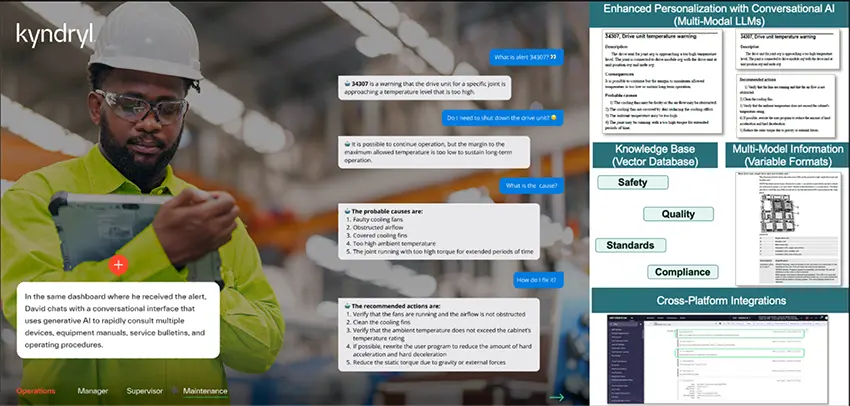 At the core of this transformation is AI’s ability to:
At the core of this transformation is AI’s ability to:
• Analyze events in real time
• Understand implications across multiple dimensions
• Execute coordinated actions via natural language interfaces
Interactions feel less like computer commands and more like delegating tasks to expert
colleagues. These agentic AI systems don’t just provide data or recommendations; they
interpret situations, orchestrate responses, and execute multi-step workflows while
keeping human operators informed and in control.
From Analysis to Autonomous Action Orchestration
Consider the scenario of a machine showing performance anomalies:
• Traditional Model
An operator notices unusual readings on gauges or dashboards.
• Persona-Based Model
The operator receives an alert on a role-specific interface.
• Agentic AI Model
The system acts as an intelligent coordinator, executing a comprehensive response workflow.
Here’s how an agentic AI might handle it:
1. Initial Analysis & Communication: The AI explains: “The extruder temperature
variance is 15% higher than normal for this material, typically indicating a bearing
issue. Initiating a coordinated maintenance response.”
2. Autonomous Workflow Orchestration: The AI autonomous actions include:
a. Calendar Integration: Analyzes maintenance crew schedules and
identifies optimal time slots within the next 48 hours, checking for conflicts
with critical production runs and shift availability.
b. Inventory Verification: Queries the parts management system to verify
bearing availability, lead times for replacement components, and identifies
alternative suppliers if stock is insufficient.
c. Production Impact Assessment: Cross-references the maintenance
window against the production schedule, identifying any critical orders,
emergency production cycles, or customer commitments that could be
affected.
d. Intelligent Work Order Creation: Automatically generates differentiated
ServiceNow tickets:
i. Planned Maintenance ticket if the timing allows for scheduled downtime without production impact
ii. Unplanned Scheduled Maintenance ticket for plant manager approval if critical production would be affected
iii. Emergency Priority ticket if sensor data indicates imminent failure risk
e. Stakeholder Coordination: Sends contextual notifications to relevant personnel with role-specific information; maintenance crew receives technical details and part numbers, production managers receive impact analysis and alternative scheduling options, plant managers receive business impact assessment and approval requests.
3. Human-in-the-Loop Approval “I’ve scheduled preliminary maintenance for Thursday 2-6 AM when Line 3 is down for material changeover. Bearing kit #BRG-7745 is in stock. The ServiceNow ticket #INC-2024-15847 has been created and requires your approval to finalize the maintenance window. Should I proceed with crew notification and work order generation?”
This agentic approach transforms a single anomaly detection into a fully orchestrated response that considers operational context, resource availability, business priorities, and stakeholder communication; all while maintaining human oversight and final approval authority. The AI doesn’t just identify problems; it becomes an intelligent operations coordinator that thinks several steps ahead and coordinates across multiple systems and stakeholders to ensure optimal outcomes.
Contextual Continuity and Shift Intelligence
Agentic AI systems maintain operational context continuously across shifts and personnel changes. Instead of isolated interactions, the AI understands the ongoing narrative:
“During the previous shift, Line 3 experienced two minor stoppages due to material feed
issues. The temporary fix worked, but sensor calibration still requires attention. Overall
efficiency improved by 3% thanks to the new temperature profile.”
This contextual intelligence extends beyond status reporting. When equipment is found on the shop floor, the AI analyzes potential safety hazards or process deviations, crossreferencing recent maintenance, production schedules, and safety protocols to
recommend actions automatically .
Integrated Ecosystem Intelligence
The most transformative impact of agentic AI is its seamless integration with enterprise systems, creating a unified intelligence layer spanning the entire manufacturing operation. When incidents occur, the AI not only notifies personnel but also analyzes the situation, determines the appropriate response, and automatically initiates ticketing workflows (e.g., through ServiceNow) complete with contextual details .
This integration fosters a self-organizing response system, ensuring that:
• The right people receive the correct information at the right time
• Responses are prioritized with the appropriate level of urgency
• Learning from each interaction enhances future responses
Moreover, the AI identifies patterns, such as incident correlations with maintenance
activities or environmental conditions, allowing it to suggest preventive measures
proactively .
Toward the Integrated Smart Factory
As generative and agentic AI technologies mature, the distinction between digital and
physical operations will become increasingly blurred. AI agents will seamlessly:
• Analyze data from multiple sources
• Control processes in real-time
• Collaborate with human operators
• Manage enterprise logistics and planning
The factory of the future will be defined not just by the hum of machines but by intelligent conversations between humans and AI systems, working together to optimize production, enhance safety, and boost responsiveness.
Organizations embracing this transformation report significant gains in:
• Operational efficiency (20-30% improvement in OEE)
• Worker satisfaction (reduced cognitive load and enhanced decision support)
• Market adaptability (faster response to demand changes)
The shift from machine-centric to experience-driven manufacturing UX is arguably one
of the most profound changes in industrial technology since the inception of automation.
Conclusion: The Imperative for Change
For manufacturing leaders, the question is no longer if this transformation will happen, but whether they will lead it or be forced to follow. The tools and technologies are already available; the only remaining hurdle is vision.
Manufacturing must be reimagined, not as a collection of machines to monitor but as an ecosystem of intelligent systems and empowered workers collaborating to create value in unprecedented ways.
The future of manufacturing UX is experience-driven and AI-enhanced, and it’s immediately achievable. The transformation starts with one workflow, one AI agent, and the courage to envision a new partnership between humans and machines in production.
About the author :

Mr. Avneesh Balyan
Chief Architect – AI@Edge, I4.0 & Edge Computing – Kyndryl
Mr. Avneesh believes that technologies like Industry 4.0, 5G, and Edge Computing are not just innovations—they are key drivers of meaningful business transformation. Rather than simply digitizing existing processes, he focuses on leveraging technology to fundamentally reshape enterprise business models.
With over 20 years of proven thought leadership and a strong technical foundation,
Mr. Avneesh combines visionary thinking with a pragmatic approach to implementation. A problem-solver and technology enthusiast, he remains grounded in the realities of deployment and operational complexity.
Mr. Avneesh provides architectural leadership to cross-functional teams, helping define technology strategies and develop innovative, revenue-generating solutions. With extensive experience working directly with C-level executives, Mr. Avneesh eQectively bridges the gap between strategic business goals and technical execution. A trusted partner to customer planning and technical teams, Mr. Avneesh collaborates to define product architectures and roadmaps that are both customer-centric and future-ready.
Mr. Avneesh Balyan is Bestowed with the following Licenses & Certifications :
https://www.linkedin.com/in/ba
Mr. Avneesh Balyan can be contacted at:
 Mr. Manbir Singh
Mr. Manbir Singh
Digital Transformation Leader – Kyndryl
A forward-thinking and dynamic leader with expertise in driving digital transformation and optimizing operations in manufacturing and supply chains, with a proven track record in the automotive and aerospace industries. With a deep understanding of the intersection between technology and manufacturing processes, Mr. Manbir’s expertise includes driving digital innovation and operational eQiciency while leading numerous digital transformation initiatives across various domains involving automation, advanced analytics, and AI/ML technologies.
Mr. Manbir has led numerous digital transformation initiatives across various domains throughout his career, involving automation, advanced analytics, and AI/ML technologies.
Mr. Manbir holds a Bachelor’s degree in Supply Chain Management from the University of Michigan-Dearborn and an MBA from the University of Texas-Tyler.
Mr. Manbir champions a holistic approach, bringing together People, Processes, and Technology to foster meaningful engagement across all levels of an organization.
Mr. Manbir delivers tailored strategies and ensures every step resonates with purpose and precision, empowering organizations to embrace change with confidence.
Mr. Manbir Singh is Bestowed with the following Licenses & Certifications :
https://www.linkedin.com/in/ma
Mr. Manbir Singh can be contacted at:


